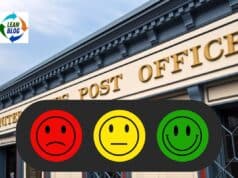No link to an article here, but I had to comment on a process that almost always has teh same form of waste — automated phone prompt systems. Why is it, whether it's an airline, a bank, or an insurance company, that you have to punch in or speak your account number to the automated system only to have the first person you talk to ask for what? Your account number! Are these systems incapable of passing along that information to the phone agent via a computer system? Are these phone systems just trying to “scare off” non-customers, thus reducing waste for the human phone operators? It seems that these processes should view waste from the eyes of the customer (the caller). Why is this such an annoyance across industries/phone systems? Is this a “Lean Consumption” topic?
Please scroll down (or click) to post a comment. Connect with me on LinkedIn.
Let’s build a culture of continuous improvement and psychological safety—together. If you're a leader aiming for lasting change (not just more projects), I help organizations:
- Engage people at all levels in sustainable improvement
- Shift from fear of mistakes to learning from them
- Apply Lean thinking in practical, people-centered ways
Interested in coaching or a keynote talk? Let’s talk.
Join me for a Lean Healthcare Accelerator Trip to Japan! Learn More










This topic definitely falls within the realm of Lean Consumption! I know that in many cases, the IVR system – Interactive Voice Response – is hosted by a major carrier or telecom services provider. When you call a nation-wide number, the IVR segments by call type and/or location, tracks call statistics, and routes the call to any one of several outsourced or internal call centers with separate, often proprietary CRM systems.
The IVR uses your account number for a different purpose than does the CRM system. Naturally, it’s hard to quantify the benefit of a fully integrated system but easy to quantify the up-front cost. If there’s any cost pressure whatsoever (and there almost always is), guess what is most likely to be shifted onto the customer?
And then there’s the related topic of Average Handle Time, a key metric for call centers that indicates the amount of time a customer service rep spends on one call. Given that over half of a call center’s cost is related to staffing, what better way to reduce operational costs than to account for every little possible thing your customers might ask about before they talk to a person?
Again, I can prove as a call center manager that I’ve lowered my costs by $xx/month with a ridiculously long IVR tree, but you can’t prove that our customers are less satisfied because of it!
Unless, of course, you are the customer. To follow one of Mark’s recurring themes, it all goes back to the learning organization. The best companies will continue to integrate customer service with an overall strategy and use data to segment customers, trigger root cause analysis, redesign products, etc. The others will continue to focus close-in until its too late.
Comments are closed.